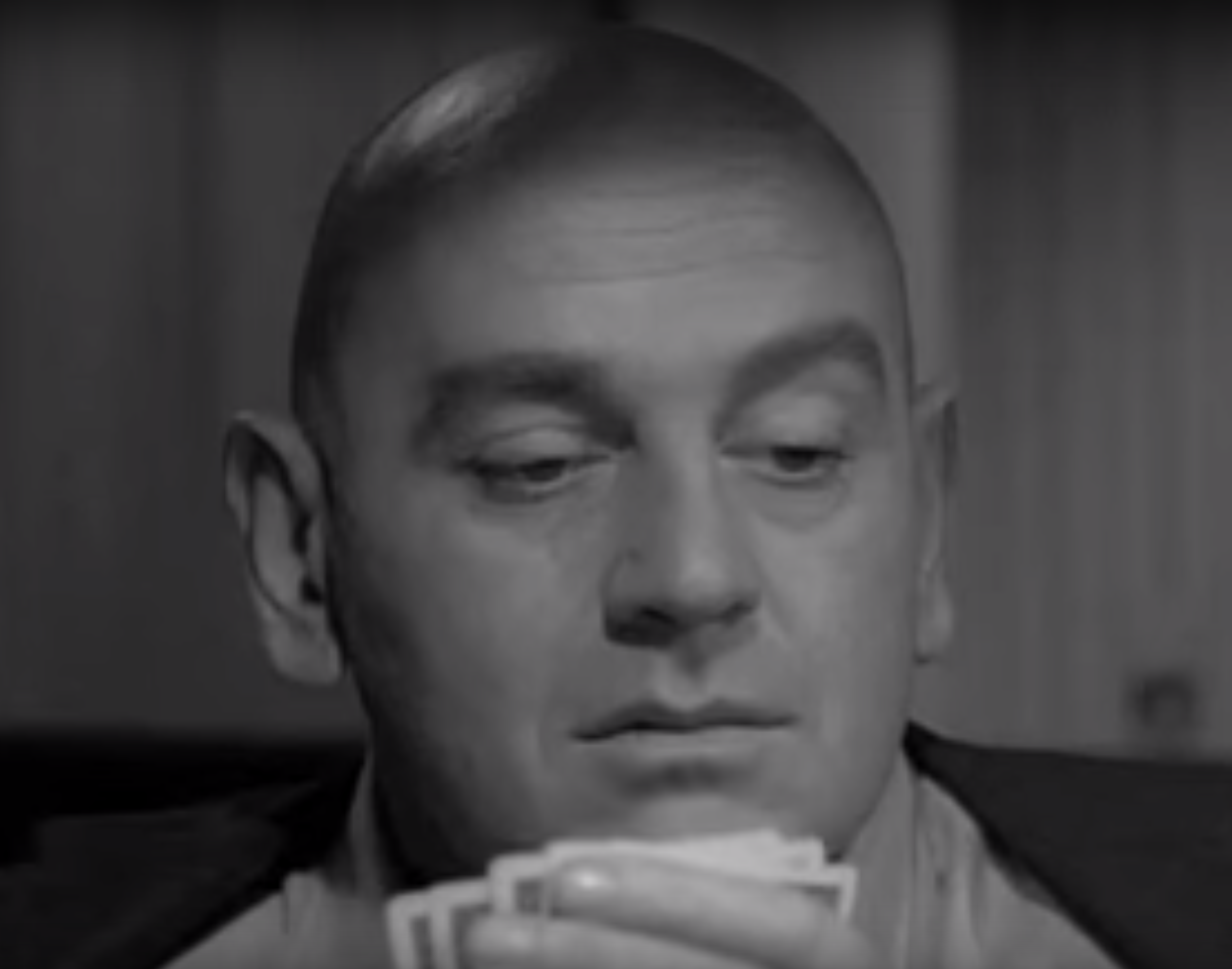Theodore Marcuse brought gravitas to the decidedly airy, unsubstantial world of 1960s television.
Theodore Marcuse cross-sectioned the world network TV at that time. Name a show, he was there: Star Trek, Hogan’s Heroes, The Untouchables, Voyage to the Bottom of the Sea, Wild Wild West, and far more.
Marcuse was a bald, ballsy, confident, and quite mysterious actor who was destined for greatness but was cut down in his prime by a car accident in 1967.
In one scene from The Twilight Zone, watch how Marcuse, as a briefly sympathetic gangster, milks the scene with the silence, eye movements, a twitch of the mouth:
Theo Marcuse Had Serious Classical Theater Chops
Two phrases thrown around about actors are “classically trained” and “does his own stunts.” Both are usually PR. But Marcuse was definitely classically trained.
Only three weeks before his death, he directed Oedipus Rex at CalTech’s Beckman Stage.
Every theater season, Marcuse acted at the Ashland (Oregon) Shakespeare Festival.
In 1949, he directed a production of Medea in Honolulu, Hawaii.
Directly after the war, his New York debut was in the role of Dimitrios in Antony and Cleopatra.
Marcuse Was Born in Seattle Washington
Theodore Marcuse was born August 5, 1920 at Swedish Hospital in Seattle, according to the “T. Marcuse” birth notice in the Seattle Star.
His father owned a fur shop in Seattle with Jean Klementis called Klementis-Marcuse Company. According to Fur Age, they specialized in “making furs to order and in remodeling and repairing.”
Marcuse Served with Distinction During WW II
Marcuse is in the upper row, right side. He served from 1944-1946 aboard the submarine USS Tirante (SS-420). He was awarded the Silver Star for bravery.
Correspondence With Poet Robinson Jeffers
Where Marcuse Lived
It is unclear whether 6659 Bonair Place, Hollywood even exists anymore. Los Angeles County Property Assessor records list a 6666 and a 6671 Bonair Place. The 6659 designation appears on records, but it appears to have been subsumed by 6659 Whitley Terrace.
Marcuse Died in 1967
Not much is known about Marcuse’s death. I have searched for information about Marcuse’s supposed November 29, 1967 traffic accident in Los Angeles and came up empty. The Los Angeles Times lists no corresponding traffic accident for that day or days following.
Aside from a Pierce Brothers Mortuary death notice, there is a Eureka (California) Times-Standard article, reading:
